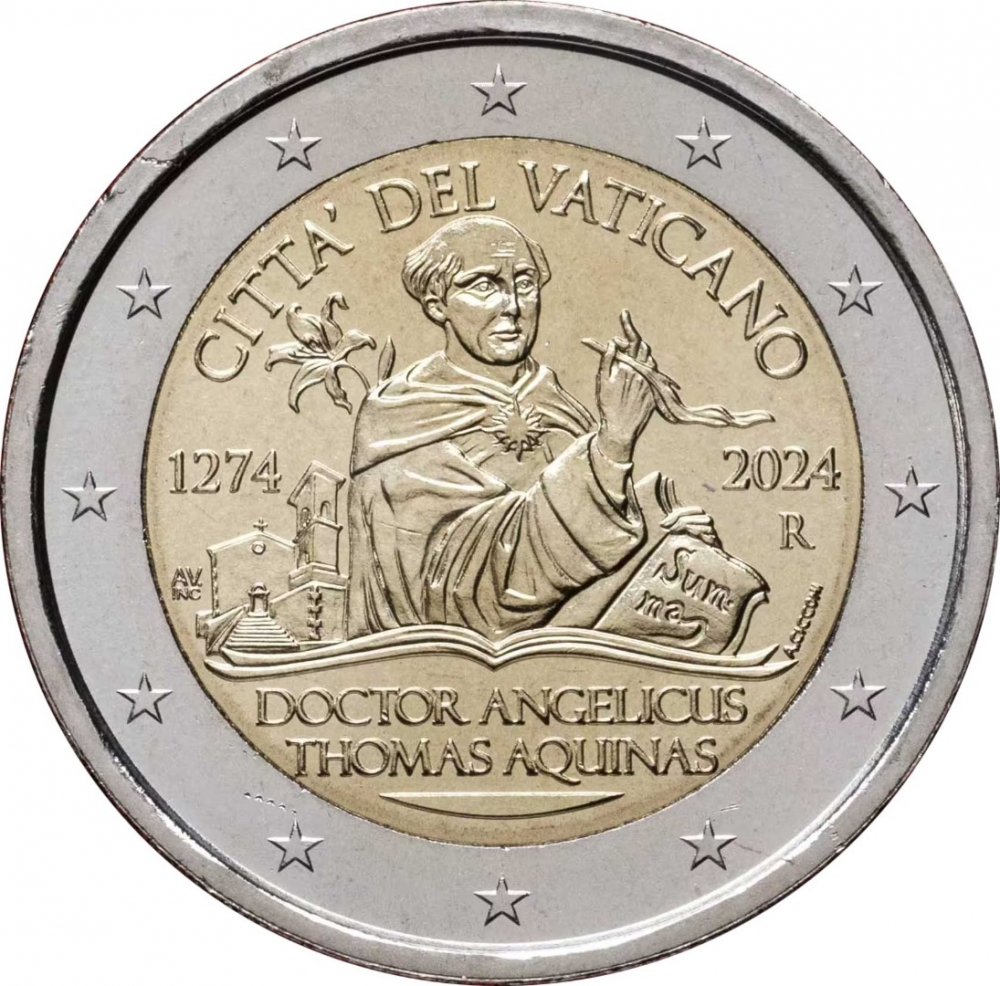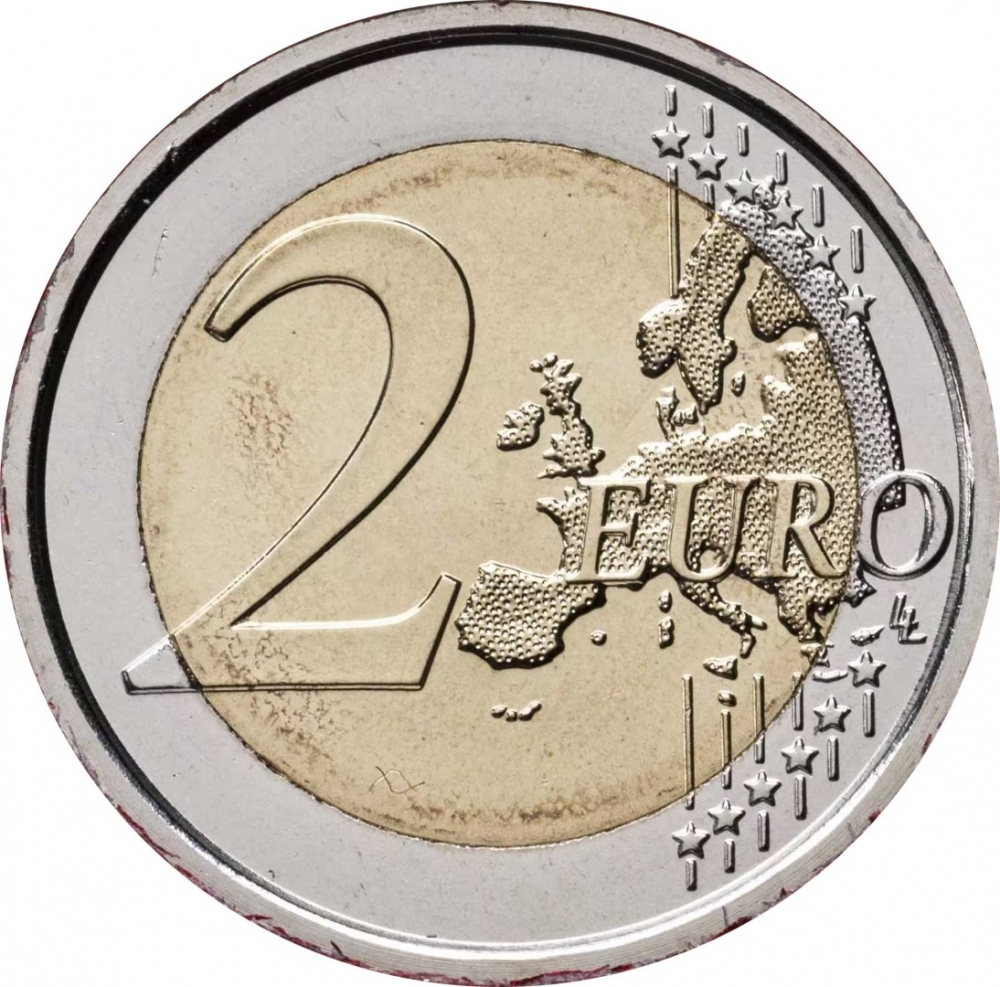You are about to finish your registration. Please check your mailbox (including spam folder). There should be a letter with a confirmation link. Check setting to make sure that your e-mail address is correct.
Send letter againDescription
Thomas Aquinas (c. 1225 – 1274) was an Italian Dominican friar, priest, and a leading philosopher and theologian of the scholastic tradition from the Kingdom of Sicily. A proponent of natural theology, he founded Thomism, synthesizing Aristotelian philosophy with Christian principles. Renowned for his works like the unfinished Summa Theologica, Disputed Questions on Truth, and Summa contra Gentiles, Thomas is also celebrated for his commentaries on Christian Scripture and Aristotle, as well as his Eucharistic hymns. Recognized as a Doctor of the Church, he is one of the Catholic Church's greatest theologians and philosophers, known as the Doctor Angelicus, Doctor Communis, and, since 1999, Doctor Humanitatis.
Obverse

|
Depicts Saint Thomas Aquinas, wearing the habit of the Dominican Order to which he belonged. He holds a tome of his most significant work, the "Summa Theologica," in his left hand and a feather quill in his right. A shining sun on his chest symbolizes his great wisdom. He is most widely known by the title "Angelic Doctor," celebrating his exceptional purity of soul and body. In the background, on the left, are a lily, symbolizing chastity, and the Church of Saint Thomas in Roccasecca, the first religious building in the world dedicated to Saint Thomas Aquinas, who was proclaimed a saint on 18 July 1323 by Pope John XXII. CITTÀ DEL VATICANO |
|---|---|
Reverse

|
A geographical map of Western Europe spans the outer ring and inner core on the right side of the coin. The inscription 2 EURO is superimposed over the map of Europe, with the numeral “2” located in an open field representing the eastern Atlantic Ocean. 2 EURO |
| Edge |
The sequence "2 ★" repeated six times alternately upright and inverted 2 ★ 2 ★ 2 ★ 2 ★ 2 ★ 2 ★ |
Characteristics
| Type | Commemorative Issue (Circulating) |
| Material | Bi-Metallic |
| Ring | Nickel Brass |
| Center | Cupronickel |
| Weight | 8.5 g |
| Diameter | 25.75 mm |
| Thickness | 2.25 mm |
| Shape |
|
| Alignment | Medal |
| Mint |
Italian State Mint and Polygraphic Institute (IPZS)
|



